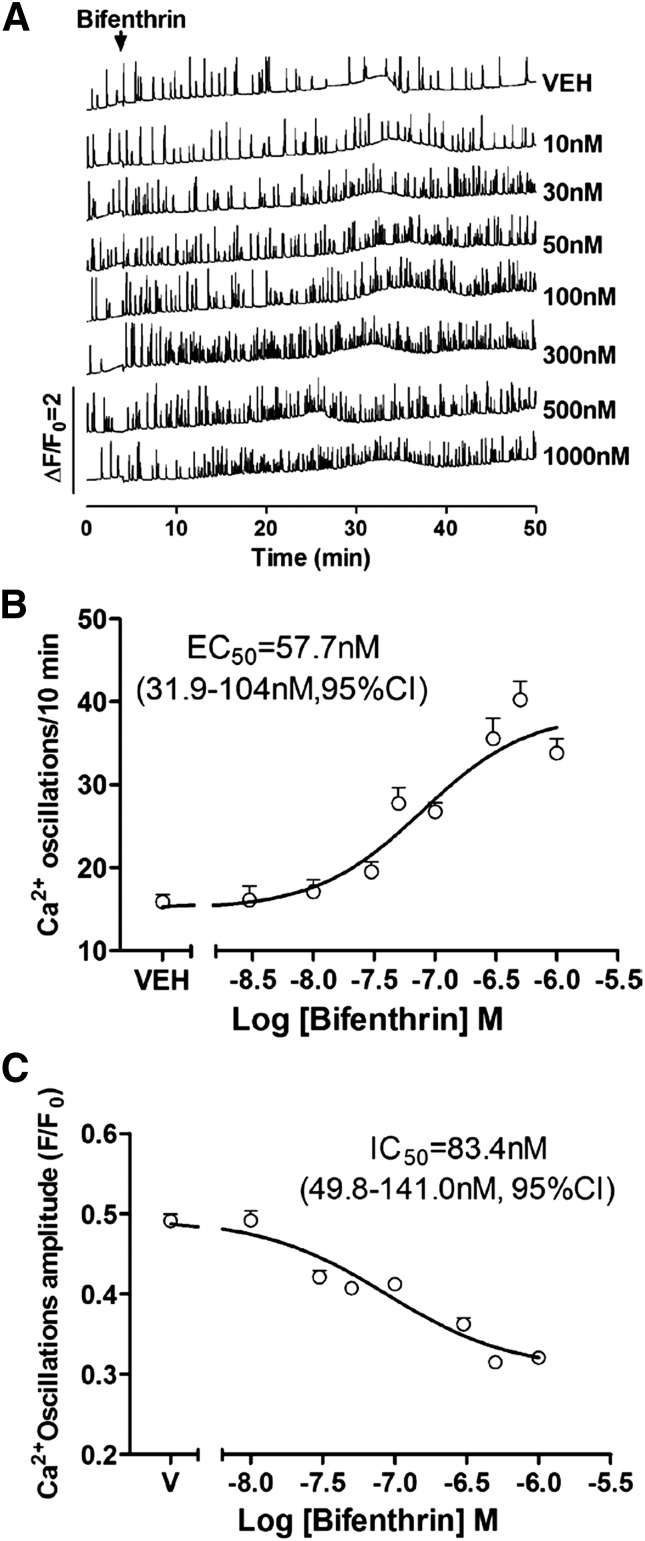Fig. 2.
Bifenthrin-induced Ca2+ dysregulation in cortical neurons. (A) Representative traces showing how acute exposure to bifenthrin (0.01–1 µM) influences Ca2+ fluctuations in cortical neurons at 8 or 9 DIV as a function of time. Bifenthrin produces a robust increase in the frequency of Ca2+ oscillations accompanied by the slightly decreased Ca2+ oscillations amplitude. (B) Concentration-response relationships for bifenthrin-stimulated increase in the frequency of Ca2+ oscillation. The EC50 value for bifenthrin-stimulated increase in the frequency of Ca2+ oscillation frequency is 57.7 nM. (C) Concentration-response relationships for bifenthrin-stimulated decrease in the amplitude of Ca2+ oscillation. The EC50 value for bifenthrin-stimulated decrease in the amplitude of Ca2+ oscillation frequency is 83.4 nM. These data were averaged from a time period of between 30 and 40 minutes after the addition of bifenthrin. Each data point represents mean ± S.E.M. (n > 20 well) from five independent cultures. VEH/V, vehicle.

